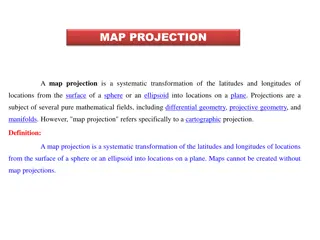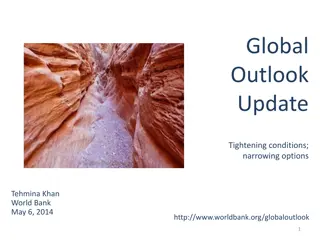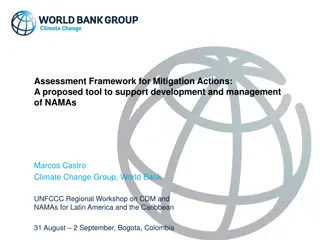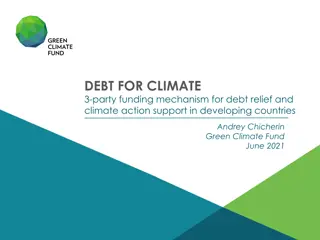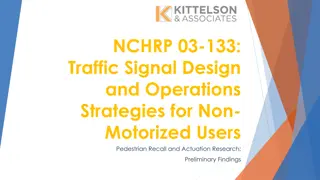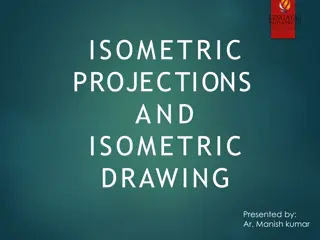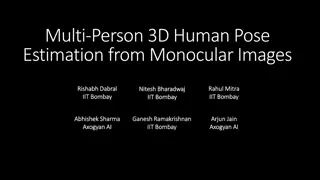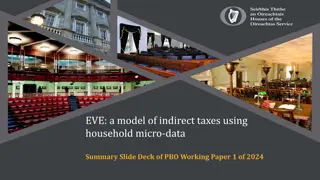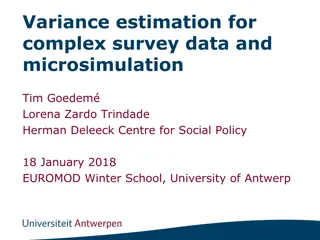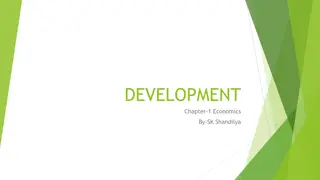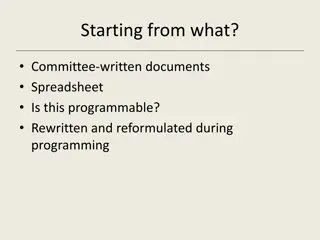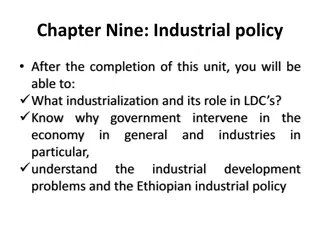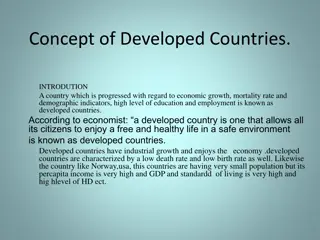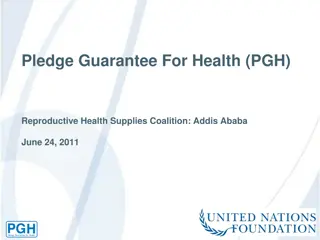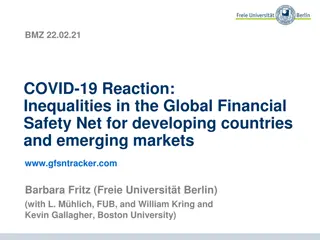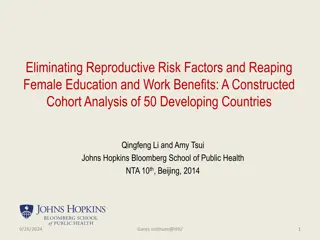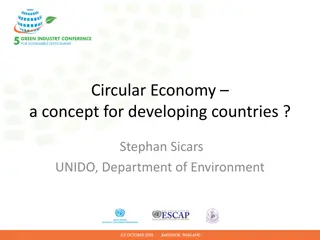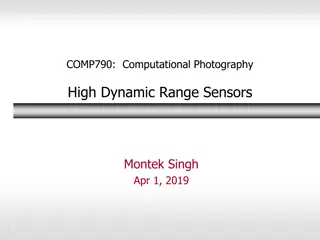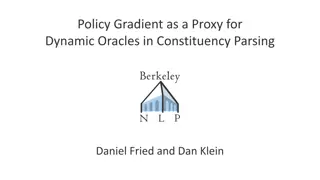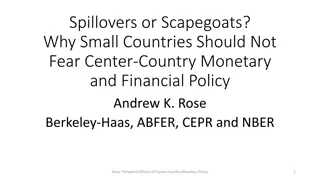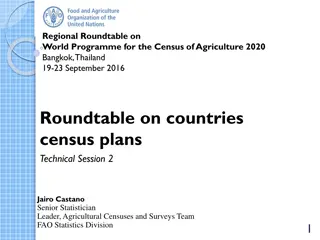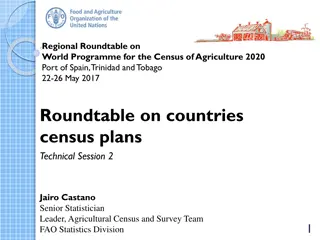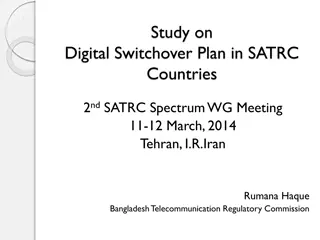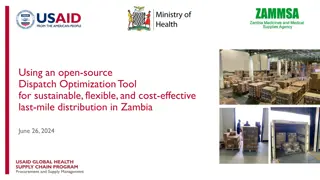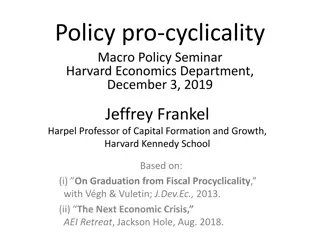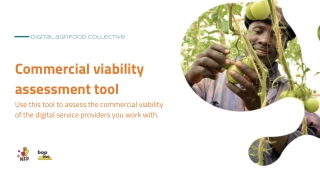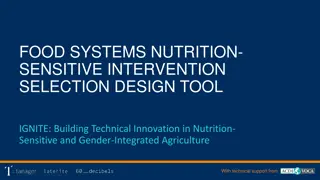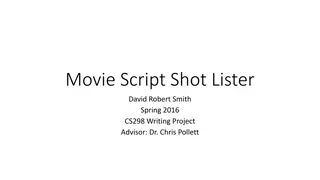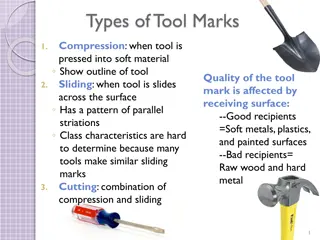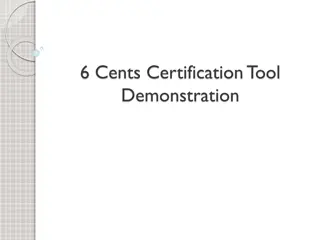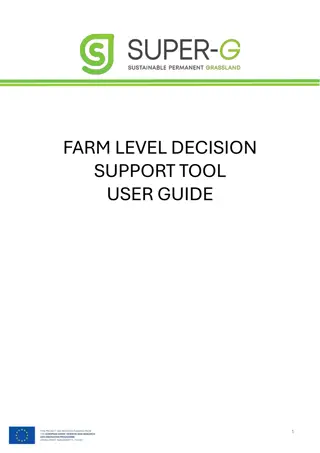Dynamic Microsimulation Projection Tool for Developing Countries
The DYNAMIS project, funded by the World Bank, aims to demonstrate the feasibility of dynamic microsimulation for population projections in developing countries. This portable platform offers highly disaggregated population projections and serves as a core component for simulating social development policies. With a focus on Mauritania, the project highlights the replicable and openly accessible modular model. The tool's characteristics include a reproducible model that can align with macro projections and refine outputs. Utilizing Modgen and GUI features, the tool provides fertility data and alignment choices for detailed analysis and projections.
Uploaded on Sep 25, 2024 | 0 Views
Download Presentation

Please find below an Image/Link to download the presentation.
The content on the website is provided AS IS for your information and personal use only. It may not be sold, licensed, or shared on other websites without obtaining consent from the author. Download presentation by click this link. If you encounter any issues during the download, it is possible that the publisher has removed the file from their server.
E N D
Presentation Transcript
DYNAMIS-POP http://ihsn.org/projects/dynamis-pop Dynamic Microsimulation Population Projection in Developing Countries Martin Spielauer, Olivier Dupriez IMA June 2017
DYNAMIS Project Background Funding o World Bank Knowledge for Change Program o International Household Survey Network Trust Fund from the UK Dep. for International Development executed by the World Bank Development Data Group Team o Olivier Dupriez The World Bank - Lead o Martin Spielauer Consultant Implementation o CMAP Centre Mauritanien d Analyse de Politiques, ONS National Statistical Office : Local Experts
DYNAMIS Purpose and Objectives Purpose: Demonstrate feasibility and relevance of dynamic micro-simulation for population projections in developing countries Objectives o Highly disaggregated population projections o Core component for a more comprehensive modular model for simulating the impact of social development policies and programs Status o Modular model; replicable, openly accessible o Pilot application for Mauritania
DYNAMIS Characteristics & Philosophy Portable platform o Based on data available for most countries o Refinable, extendable & adaptable to specific contexts Start from the known (available macro projections) o Model can reproduce macro models: same assumptions, parameter tables -> same outputs o More refined models can be added and selected with and without alignment to macro projections Reproducible o Step-by-step documentation (stats & programming) o Freely available software (language & app)
DYNAMIS Fertility Base Version o Age-specific fertility distribution by year o Total Fertility Rate (TFR) by year Extended Version o First births by age, union status, education, province o Higher order births by education, time since last birth o Separate trends by birth order Alignment Choices (extended version) o Not aligned o Aligned to total births of base version o Aligned to total births by age of base version
DYNAMIS Mortality Base Version o Standard life table of age-specific rates by sex o Life expectancy by calendar year and sex Refined child mortality model (ages 0-4) o Age baseline o Relative risks by mothers education and age group o Age-specific overall trends Alignment options (refined model) o Without o Initial alignment to base model trends from base o Initial alignment to base model specific trends
DYNAMIS Internal Migration Base o Probabilities to leave by province, age group and sex o Distribution of destinations by origin, age, sex Refined o Education added to probability to leave
DYNAMIS Immigration and Emigration Immigration o Immigration numbers by year and sex o Age distribution by sex o Destination distribution by sex and age Emigration o Emigration rates by province, age and sex
DYNAMIS Primary Education Base: Probabilities of school entry and graduation by year & province of birth, sex Refined: adding mothers education
DYNAMIS Primary Education Based on proportional models (logistic regression) High and persistent inter-provincial differences
DYNAMIS Primary Education - Scenarios Scenarios on overall trends by sex Scenarios on provincial trends (convergence) Scenarios for study of composition effects by mothers education only
DYNAMIS First Union Option A: Age-specific rates by age and cohort Option B: Parametric model by Coale & McNeil o Parameters: lowest and average age at first union formation and final outcome of ever entering a union o Simulation results can be used as base for option A (which can be easily modified e.g. to a scenario banning child marriages)
DYNAMIS First Union - Analysis First Union Formation - Finish Primary (Survival, Data and Model) Average age at Fiirst Union Formation by Year of Birth (Cohort Trend) 1 25 0.9 24 0.8 23 0.7 22 0.6 0.5 21 0.4 20 0.3 19 0.2 18 0.1 0 17 Start 13 21 29 37 45 11 15 17 19 23 25 27 31 33 35 39 41 43 47 16 Data 1965-1974 Data 1975-84 15 Data 1985-94 Data 1995+ 1965-1974 1975-84 1985-94 1995+ Estimate [forced 90%+] 1965-1974 Estimate [forced 90%+] 1975-84 No education Primary Secondary Estimate [forced 90%+] 1985-94 Estimate [forced 90%+] 1995+
Example: Universal Primary Education in Mauritania
Example: Effects of Education 2 Scenarios: o Base: Continuing observed trends o Alternative: Phased-in universal primary reached 2030 Primary Education by Year Of Birth - Female, Hodh-Charghy 100% 90% 80% 70% 60% 50% 40% 30% 20% 10% 0% 2001 2010 2013 2016 2025 2028 2037 2040 2043 2003 2012 2015 2018 2027 2030 2039 2042 2045 2004 2007 2019 2022 2031 2034 2046 2049 2006 2009 2021 2024 2033 2036 2048 .. Base Scenario .. Scenario 2 never enter enter primary graduate from primary
Example: Early Teenage Births Births by mothers below age 15 and below age 17 6000 5000 4000 3000 2000 1000 0 2017 2022 2027 2032 2037 2042 2047 Base Scenario Below 15 Base Scenario Below 17 Scenario 2 Below 15 Scenario 2 Below 17
Example: Births by Mothers Education 200,000 180,000 160,000 140,000 120,000 100,000 80,000 60,000 40,000 20,000 0 . 2027 2026 2017 2019 2021 2023 2025 2029 2031 2033 2035 2037 2039 2041 2043 2045 2047 2049 2018 2020 2022 2024 2028 2030 2032 2034 2036 2038 2040 2042 2044 2046 2048 2050 Base Scenario . Scenario 2 Never entered primary school Primary school non-completer Primary school graduate
Example: Deaths Deaths Infant Deaths (age<5) 60000 60000 50000 50000 40000 40000 30000 30000 20000 20000 10000 10000 0 0 Base Scenario Scenario 2 Base Scenario Scenario 2
Outlook Model currently ported to Nepal New modules for education o Tracking of school attendance by grade o Higher education o Functionality for planning More disaggregation: e.g. ethnicity, geography Collaboration with WorldPop - Geo-referencing New module for internal migration Focus: Tool supporting analysis connected to Sustainable Development Goals (SDG) and SDG indicators
Documentation Detailed Report Software Downloads Step-by-Step Model implementation instructions ( Modgen Textbook ) Statistical analysis (Stata .do) files Anonymised Census sample Starting Population http://ihsn.org/projects/dynamis-pop




